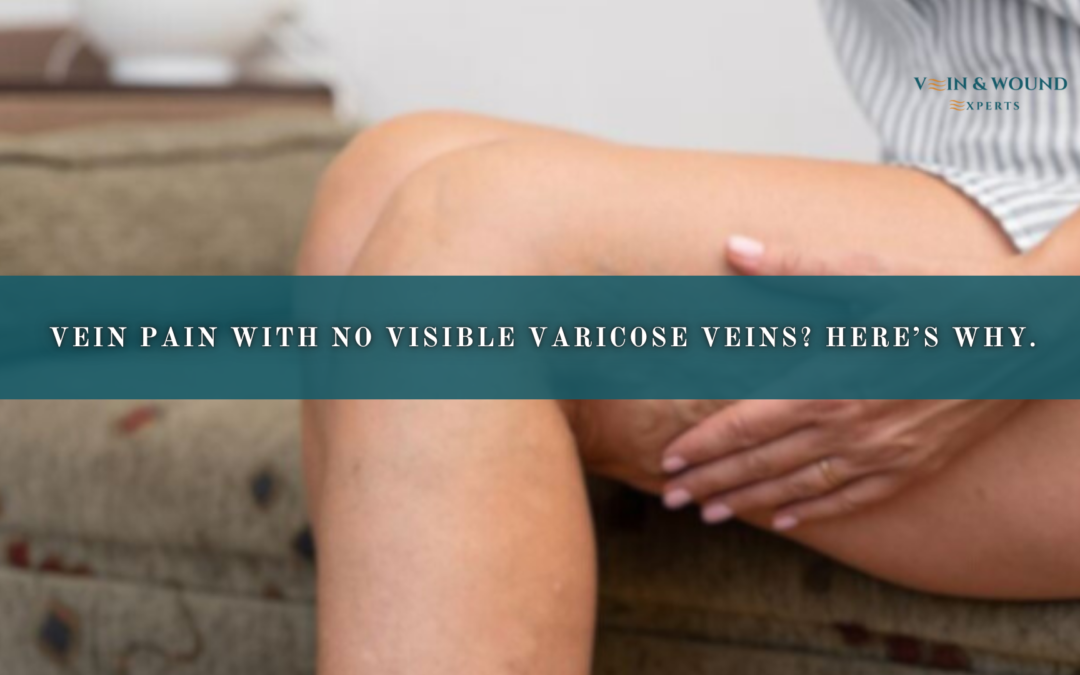Hidden Vein Disease and Deep Vein Symptoms
Experiencing leg pain no visible varicose veins can be confusing and concerning. Many individuals notice discomfort or heaviness in their legs without seeing the bulging veins typically associated with venous disease. In such cases, the underlying issue often lies in the deeper veins rather than the superficial ones. These veins are responsible for returning blood efficiently from the lower extremities to the heart, and when they do not function properly, symptoms can appear long before visible signs of vein disease emerge. Understanding these early indicators is crucial for identifying potential circulation issues before they progress into more persistent discomfort or complications.
🦵 Understanding the Deep Vein System
The deep vein system carries the majority of blood from the legs back to the heart. Unlike the veins near the surface, these vessels are less visible and more difficult to assess without imaging tools. When valves within the deep veins become weak or fail, blood can pool in the lower extremities, leading to sensations of heaviness, aching, or fatigue. These changes do not always manifest outwardly, which is why many people with deep venous insufficiency remain undiagnosed for years. Recognizing subtle symptoms such as swelling after prolonged standing or recurring nighttime leg cramps can provide important clues about deeper vein involvement.
💡 Subtle Indicators Often Overlooked
Leg discomfort without visible veins may include:
- A dull, persistent ache that worsens over the day
- Swelling in the ankles or calves that diminishes after rest
- A feeling of tightness or heaviness in the lower legs
- Intermittent tingling or restless sensations at night
Because these signs can mimic fatigue or muscle strain, they are frequently dismissed. However, consistent patterns especially if they appear after periods of inactivity or prolonged standing warrant closer attention.
🔬 Role of Ultrasound Diagnosis in Detecting Hidden Issues
Medical imaging, particularly ultrasound diagnosis, is essential for evaluating the deep veins. Ultrasound allows clinicians to assess valve function, detect blood flow abnormalities, and pinpoint areas where venous pressure is elevated. This non-invasive test is painless, quick, and highly effective in identifying the root causes of leg discomfort that may not be visible on the surface. Early detection through ultrasound can guide appropriate treatment strategies, preventing future complications and supporting long-term vascular health.
🌿 Managing Symptoms and Improving Leg Comfort
Lifestyle adjustments can make a meaningful difference even before visible veins appear. Regular movement, leg elevation after prolonged sitting or standing, and compression garments can help reduce symptoms associated with deep venous insufficiency. Maintaining a healthy weight, staying active, and avoiding long periods of immobility all contribute to better venous return and overall leg comfort. These strategies, combined with early evaluation through imaging, provide a proactive approach to vascular health.
🩺 Differentiating Surface and Deep Vein Concerns
While visible varicose veins are often associated with more advanced venous disease, pain without these outward signs frequently stems from deeper vascular structures. It is important to recognize that discomfort alone does not always indicate a severe condition but may highlight the early stages of impaired venous function. Understanding the distinction between superficial and deep veins ensures that treatment focuses on the underlying cause rather than solely addressing cosmetic symptoms.
✨ Listening to Your Legs and Seeking Evaluation
Paying attention to repeated leg discomfort, swelling, or heaviness is the first step toward identifying hidden vein disease. Individuals experiencing leg pain no visible varicose veins can benefit from early assessment with medical imaging such as ultrasound, which confirms whether deeper veins are functioning correctly. Identifying issues early allows for more effective interventions, lifestyle adjustments, and monitoring to prevent progression.
🌟 Maintaining Leg Health Before Visible Symptoms Appear
Even without outward signs, leg discomfort can indicate early vascular changes. Recognizing patterns in pain, fatigue, and swelling helps differentiate between normal tiredness and deeper vein issues. Prompt assessment of the deep vein system using imaging techniques supports early detection, targeted care, and improved long-term leg health.

Andy Sharifi
Position
